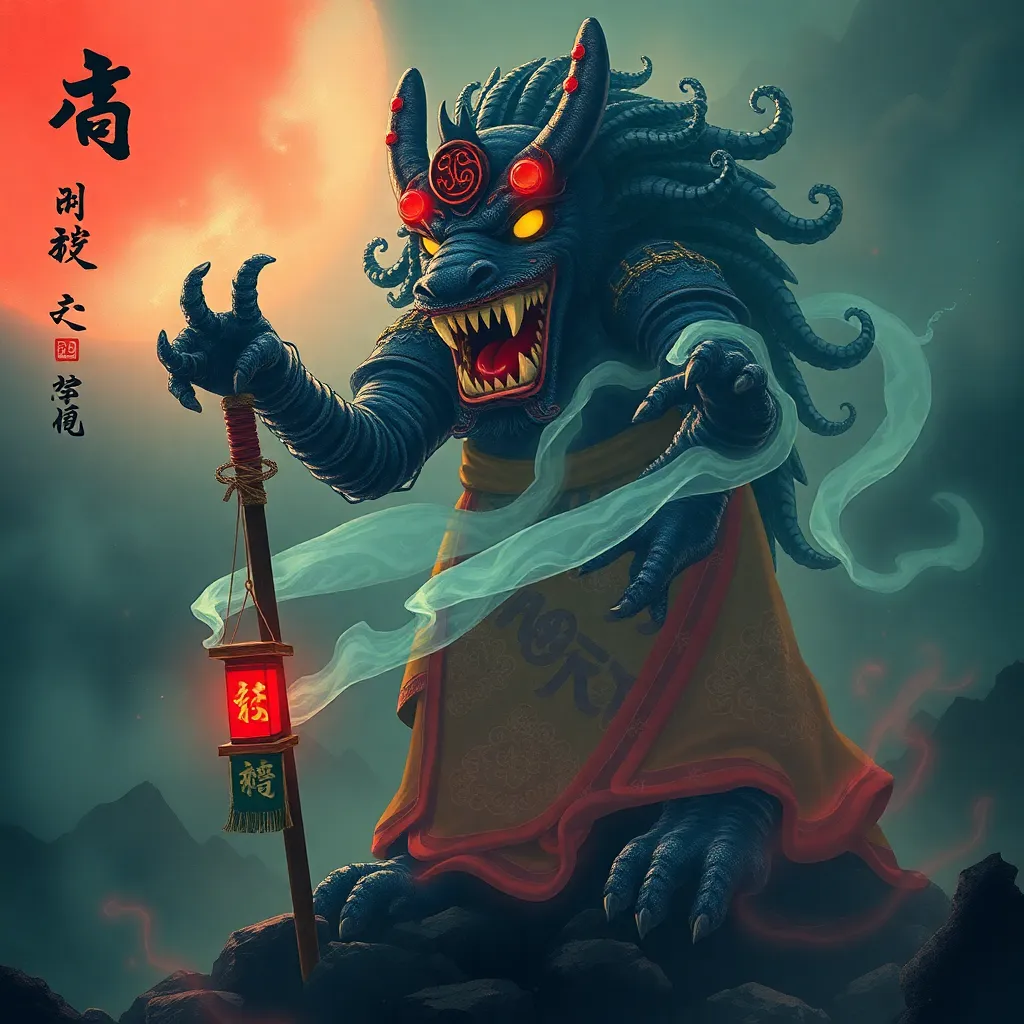From Yōkai to Guardian: The Evolving Role of the Baku in Japanese Culture
I. Introduction
The Baku, a mythical creature in Japanese folklore, is often depicted as a dream-eating being that holds significant cultural and spiritual importance. With its origins steeped in ancient mythology, the Baku has transformed from a feared yōkai to a revered guardian figure in modern Japan. This article will explore the evolutionary journey of the Baku, examining its historical origins, cultural significance, and the impact it has had on contemporary society.
II. Historical Origins of Baku
The origins of the Baku can be traced back to ancient Chinese mythology, where it was initially described as a creature with the body of a bear and the trunk of an elephant. This mystical being was thought to consume nightmares, a feature that would later become integral to its identity in Japanese culture.
A. The mythical origins of Baku in ancient Chinese mythology
In Chinese lore, the Baku is known as the “Baku” (貘), a creature believed to devour dreams and nightmares, thus providing a form of protection for those who invoke its presence. This connection between dreams and the Baku laid the groundwork for its eventual integration into Japanese folklore.
B. Introduction of Baku into Japanese folklore
The Baku was introduced to Japan during the Tang dynasty (618–907 AD) through cultural exchanges between China and Japan. As it made its way into Japanese myth, the Baku began to adopt distinct characteristics, blending with local beliefs and traditions.
C. Early representations and characteristics of Baku as a yōkai
In early Japanese representations, the Baku was depicted as a hybrid creature, often featuring traits of various animals, including the elephant, tiger, and rhinoceros. These depictions highlighted the Baku’s otherworldly nature, reinforcing its status as a yōkai. It was believed that the Baku could enter people’s dreams and consume their nightmares, offering solace to those plagued by bad dreams.
III. The Yōkai Era: Baku in Folklore and Cultural Beliefs
During the Edo period (1603–1868), the Baku became an integral part of Japanese folklore, embodying both fear and fascination. Its role as a dream eater was celebrated, and various cultural beliefs developed around sleep and nightmares.
A. The role of Baku as a dream eater
The Baku was primarily seen as a protector against nightmares. People would invoke the Baku’s name before sleeping, hoping it would devour any unpleasant dreams. This ritualistic approach to sleeping reflected a broader cultural belief in the importance of dreams and their impact on daily life.
B. Cultural beliefs surrounding nightmares and sleep
Throughout Japanese history, nightmares were often seen as foreboding omens or manifestations of personal struggles. The belief that the Baku could alleviate these fears contributed to its growing popularity as a protective figure. Rituals and prayers were commonly performed to ensure a peaceful night’s sleep.
C. Baku’s depiction in literature and art during the Edo period
During the Edo period, the Baku was frequently depicted in ukiyo-e prints, paintings, and literature. Artists portrayed the Baku in various forms, often emphasizing its surreal appearance and dream-related powers. These artistic representations helped cement the Baku’s status in Japanese culture.
IV. The Transition from Yōkai to Guardian
As Japan moved into the Meiji period (1868–1912) and beyond, the perception of the Baku began to shift from a yōkai associated with fear to a guardian figure embodying protection and comfort.
A. Factors contributing to the shift in perception
Several factors contributed to this transformation, including societal changes, the influence of modernization, and a growing interest in spiritual well-being. The Baku’s association with dreams and protection became more pronounced as people sought comfort in the face of rapid societal changes.
B. The influence of Buddhism and Shintoism on Baku’s role
Buddhism and Shintoism played pivotal roles in shaping the Baku’s identity as a guardian. In Buddhist practice, the Baku was often invoked to ward off evil spirits and misfortune, while Shinto rituals incorporated the creature as a symbol of protection against negative influences.
C. The incorporation of Baku into protective rituals and practices
With the Baku’s evolving identity, it became a common figure in protective charms (omamori) and talismans. These items were often placed in homes to safeguard against nightmares and misfortune, reinforcing the Baku’s role as a guardian spirit.
V. Baku in Modern Popular Culture
In contemporary society, the Baku has found new life in various forms of media, including anime, manga, and video games. This resurgence highlights the enduring appeal of traditional folklore in modern culture.
A. Representation of Baku in contemporary anime, manga, and video games
Today, the Baku appears in numerous anime and manga series, often depicted as a friendly, whimsical character that symbolizes comfort and protection. Video games also feature the Baku as a helpful ally, reinforcing its role as a guardian figure.
B. The resurgence of interest in traditional folklore through modern media
The portrayal of the Baku in modern media has sparked renewed interest in traditional Japanese folklore. Audiences are increasingly drawn to stories that explore cultural heritage, leading to a deeper appreciation for the Baku and its historical significance.
C. Baku as a symbol of comfort and protection in modern Japanese society
In a fast-paced world filled with stress and uncertainty, the Baku has emerged as a symbol of comfort and protection. Many people, especially children, continue to rely on the Baku’s mythos for reassurance during challenging times.
VI. Symbolism and Cultural Significance of Baku Today
Today, the Baku is not only recognized as a creature of folklore but also as a significant cultural symbol representing protection against misfortune and nightmares.
A. The Baku as a guardian figure against misfortune
In contemporary Japan, the Baku is often regarded as a guardian figure that helps ward off misfortune, particularly in the context of mental health. Many believe that invoking the Baku can bring peace of mind and alleviation from anxiety.
B. Contemporary practices: talismans, charms, and rituals involving Baku
- Many families keep Baku-themed charms in their homes.
- Schools often distribute Baku talismans to students for protection during exams.
- Artisans create Baku figurines as gifts to invoke good dreams.
C. The impact of Baku on personal well-being and mental health in Japan
As mental health awareness grows, the Baku’s image as a protector has become increasingly relevant. People often turn to Baku-related practices and rituals to help manage stress and promote positive mental health.
VII. Comparative Analysis: Baku and Other Cultural Figures
When examining the Baku within a global context, it is essential to explore its similarities and differences with other protective figures in various cultures.
A. Similarities and differences between Baku and other protective figures in global cultures
Like the Baku, many cultures have protective figures, such as:
- **The Sandman** in Western folklore, who brings sleep and dreams.
- **Banshee** in Irish mythology, a spirit that warns of death.
- **Chaneques** in Mexican folklore, guardians of nature that protect the forest.
While these figures share protective roles, their cultural contexts and characteristics differ significantly.
B. The role of yōkai in Japanese folklore compared to Western mythological creatures
Yōkai, including the Baku, often embody dual natures, capable of both benevolent and malevolent actions, unlike many Western mythological creatures, which are typically categorized more strictly as good or evil. This ambiguity reflects the complex nature of Japanese beliefs regarding the supernatural.
C. How cultural exchanges have shaped the perception of Baku
The Baku’s transformation over centuries exemplifies how cultural exchanges between Japan and China have influenced its perception. As Japan modernized, the Baku adapted to new societal values, showcasing the fluidity of cultural symbols.
VIII. Conclusion
The evolution of the Baku from a feared yōkai to a beloved guardian figure highlights the dynamic nature of Japanese culture and folklore. By understanding the historical and cultural significance of the Baku, we can appreciate its role in contemporary society as a symbol of comfort and protection.
Preserving folklore in a modern context is essential, as it enriches cultural identity



